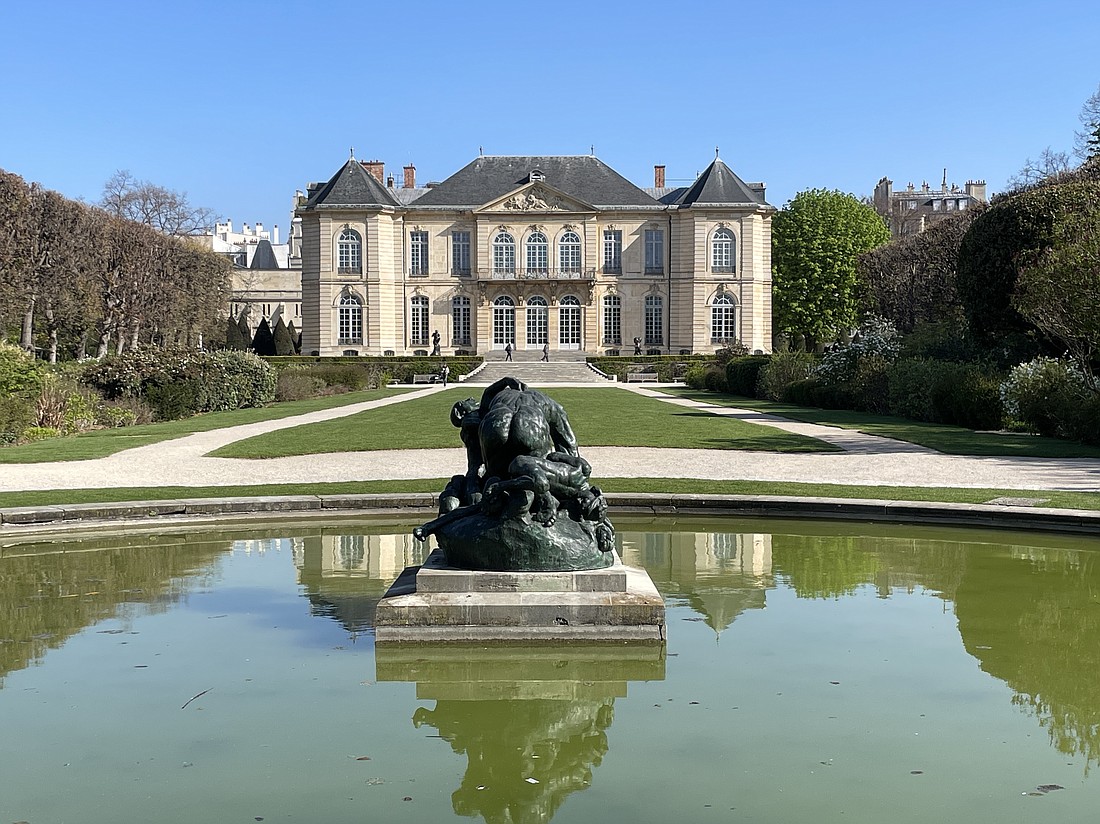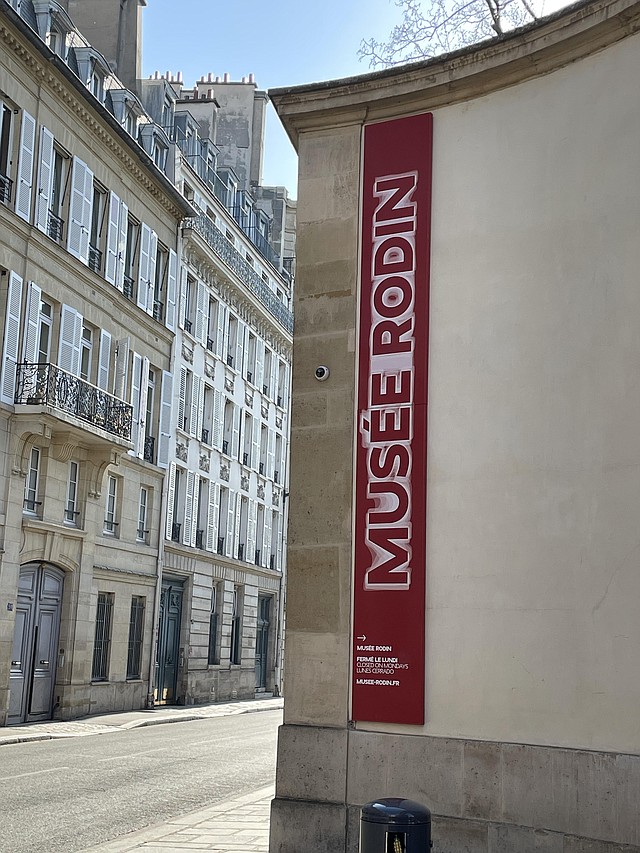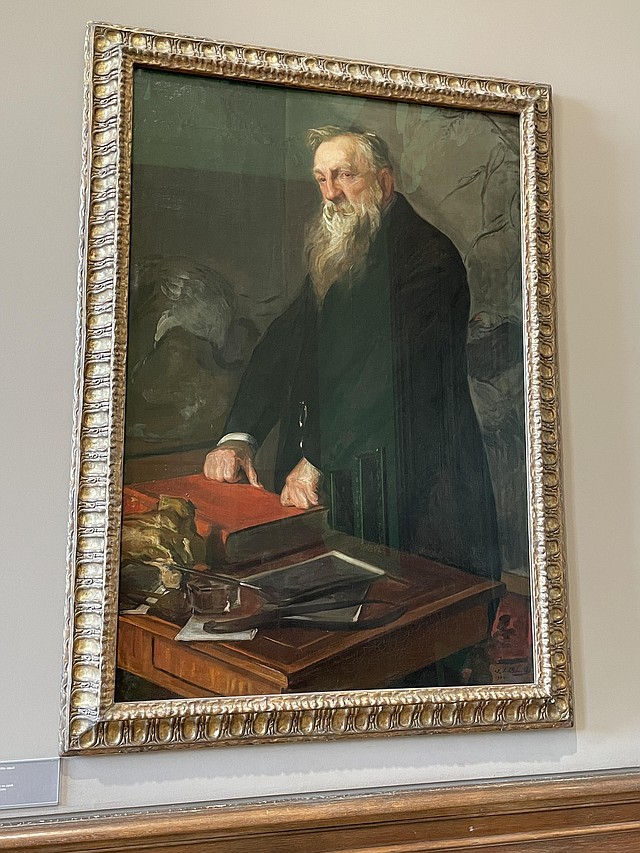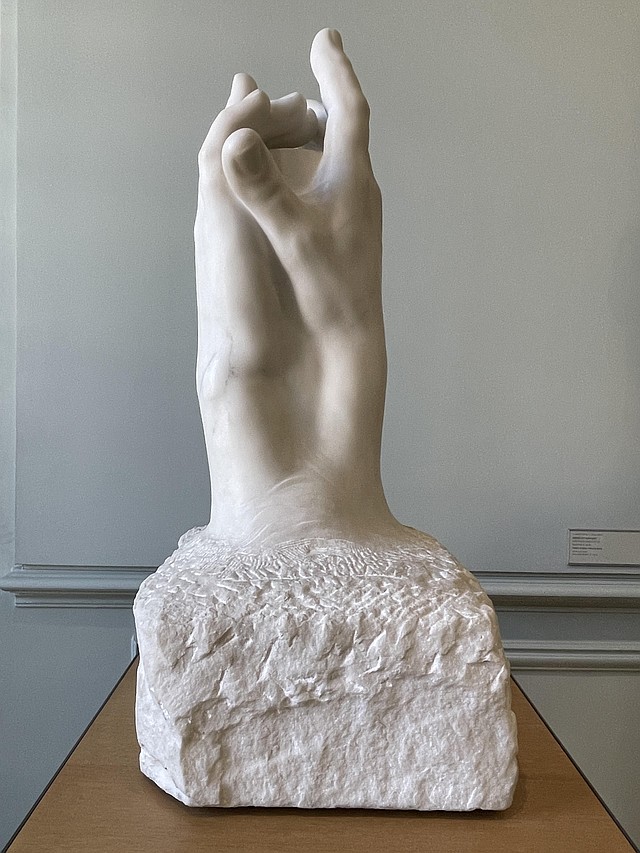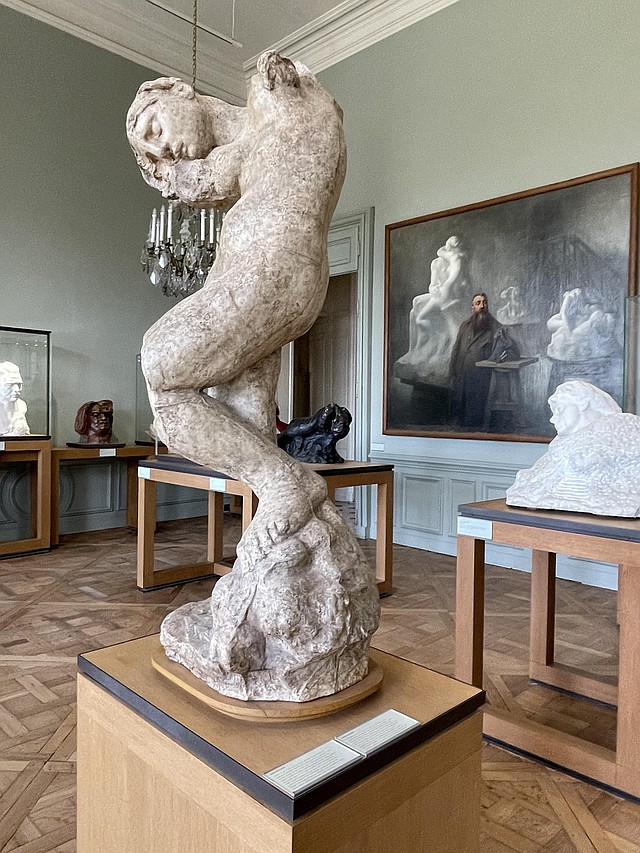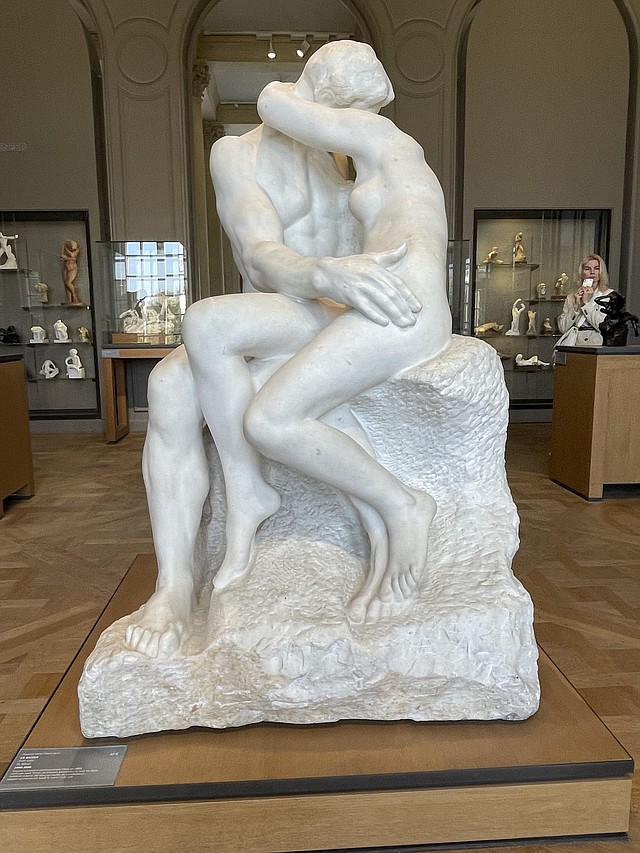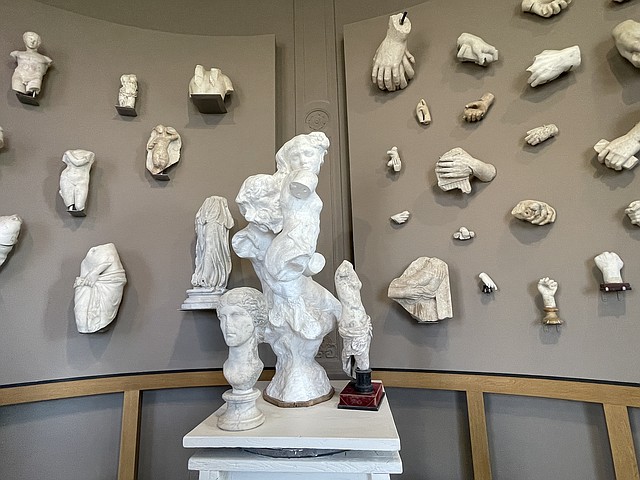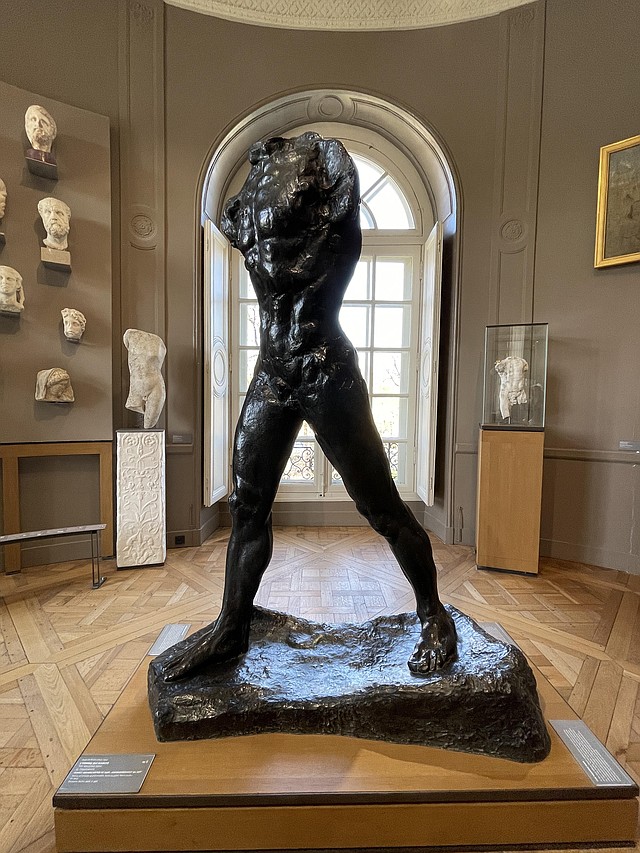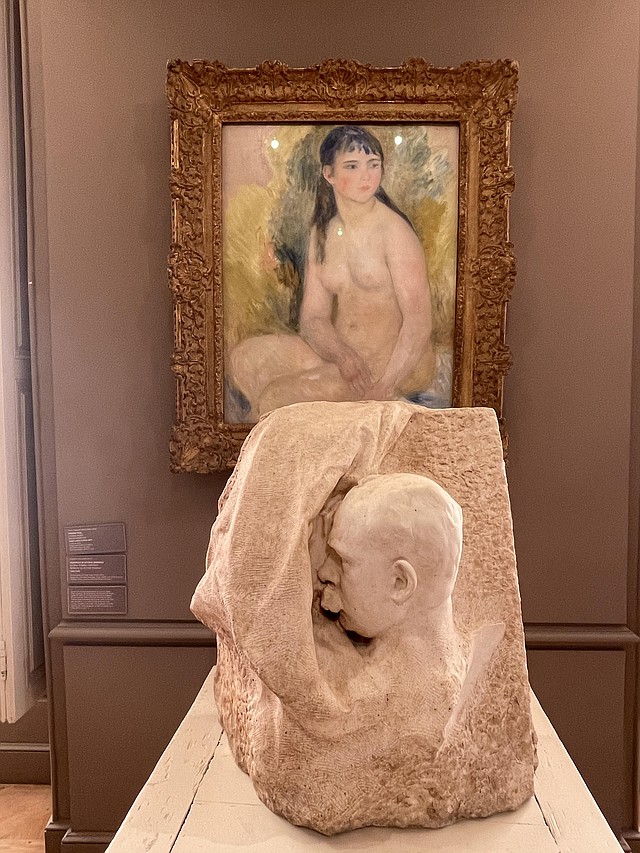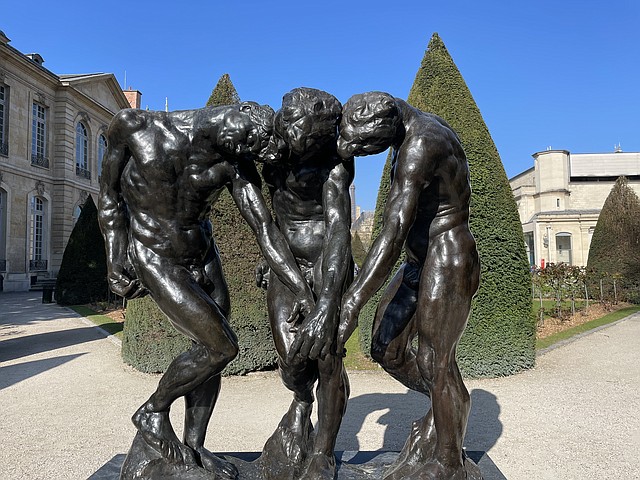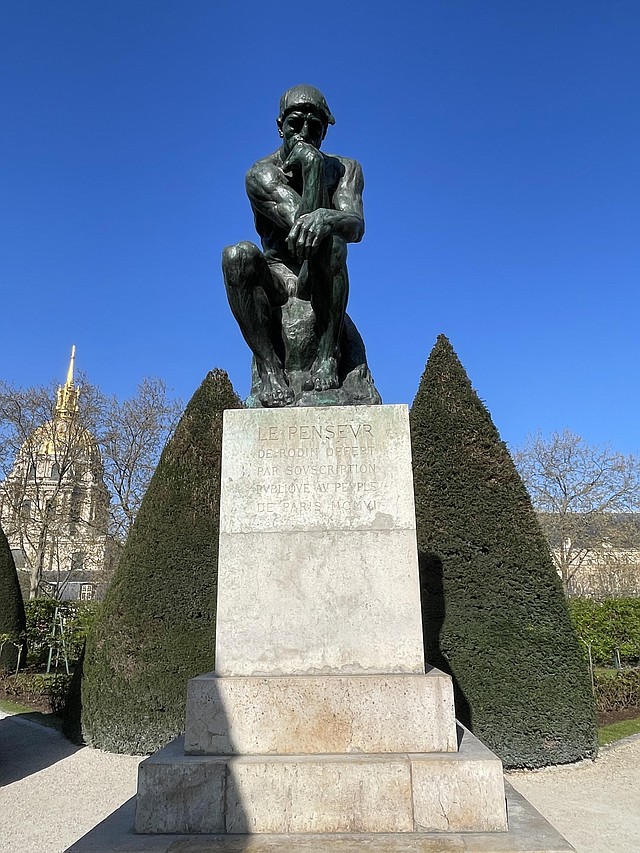I have been to Paris a few times, but somehow I never got around to visiting the Musée Rodin until my most recent visit. One of the most elegant and photogenic institutions in the city, the Rodin Museum is located in the handsome Hôtel Biron, surrounded by a lush garden dedicated to the art of the renowned and prolific French sculptor, Auguste Rodin.
Considered by many as the “father of modern sculptor,” Rodin was inspired by tradition yet took a stance against its idealized forms. Over the course of a career that spanned the late 1800s and early 1900s, he introduced innovative practices that changed the way sculpture had been created and perceived.
Rodin’s work echoed his belief that art should be true to nature. He focused on the human form and sought to express the essence of the human psyche, delving into what lay below the surface. In this manner, he developed a technique to render the power of such emotions as turmoil, tragedy, joy and passion.
Working primarily with bronze and marble, Rodin was known for retaining the tool marks and leaving parts of his sculptures somewhat rough, deciding not to hide signs of his process. This was revolutionary at the time.
The artist lived in the Hôtel Biron later in his life and in 1911, the government bought the property. In exchange for being able to stay at the hotel, Rodin agreed to donate many of his works to be housed there as a museum, which subsequently opened to the public in 1919. The collection is vast and includes thousands of sculptures, drawings, old photos and antiquities.
This incredible oeuvre is on display within a series of galleries, each designed in a circular format with an open layout. High ceilings and lots of windows and mirrors augment the pieces and showcase the art, while reminding visitors that this was Rodin’s work environment. There’s a logical and chronological manner to their placement, demonstrating themes, subjects and materials that were of interest to the artist. And sculptures are presented in their successive states, allowing the viewer to understand the different stages of Rodin’s creative process.
“The Thinker” is regarded by many as Rodin’s most well-known work. Though the artist created many iterations of this sculpture of a pensive seated male, the most famous one is at this museum. Philadelphia body builder Samuel Stockton White the 3rd served as Rodin’s model for the piece back in 1901.
Other highlights include “The Kiss,” “The Cathedral,” “The Age of Bronze,” “The Walking Man,” “The Three Shades,” “Monument to Balzac” and “The Gates of Hell.” The latter piece occupied the artist for thirty-seven years and during this period of time, he added, removed and altered the more than 200 figures that appear on the doors of the piece. Though Rodin planned to carve the work in marble, it never happened due to his failing health, so it exists only in plaster.
In addition to his own art, Rodin collected pieces from his contemporaries, including Vincent van Gogh, Claude Monet, and Pierre-Auguste Renoir, which are on display in the museum. There is also a room solely devoted to the artist Camille Claudel and her works. A gifted sculptor in her own right, Claudel was one of Rodin’s models and students, as well as his lover; a relationship that was described as stormy and turbulent.
Outside is the seven-acre garden, a stunning area with manicured hedges, tree-lined paths, flowers and fountains. It’s a lovely area to showcase some of Rodin’s works to their best advantage and emphasizes the interaction between nature and sculpture.
“The Thinker” takes centerstage atop a pillar among trees, and faces “The Gates of Hell” on the other side of the garden. “The Burghers of Calais” stands in its own space, a largescale sculpture of six men, representing important citizens or “burghers” of the city of Calais in the 14th century. Story has it that the English king, Edward III, had ordered his army to lay siege to the town. The residents tried to hold out under the orders of their own king, Philip VI, but they were starving. These burghers offered their lives in exchange for an end to the siege.Rodin depicts these courageous men going to their deaths with nooses around their necks. Though the burghers were ultimately not executed, as the wife of Edward III interceded on their behalf, the artist so poignantly captures their despair.
Other Rodin sculptures are interspersed within this expansive garden. Visitors stroll or sit on the benches, contemplating the pieces amid the beauty of the natural setting.
www.musee-rodin.fr/enDebbie Stone is an established travel writer and columnist, who crosses the globe in search of unique destinations and experiences to share with her readers and listeners. She’s an avid explorer who welcomes new opportunities to increase awareness and enthusiasm for places, culture, food, history, nature, outdoor adventure, wellness and more. Her travels have taken her to nearly 100 countries spanning all seven continents, and her stories appear in numerous print and digital publications.
